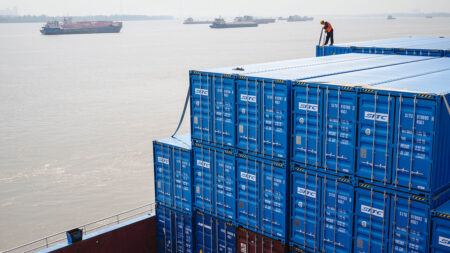In the 1990s, Japan faced a severe economic crisis characterized by what was termed the “triple yasu” loss. This phrase encapsulated three interrelated economic phenomena: a significant drop in stock markets, an increase in bond yields, and the depreciation of the national currency. These factors combined to create an unprecedented economic environment that challenged Japan’s financial stability and resilience. Today, it appears that the United States, under the leadership of President Donald Trump, finds itself grappling with a similar predicament characterized by this troubling combination. After a momentary reprieve following the President’s decision to temporarily pause tariffs, the manifestations of the triple yasu have re-emerged, causing both concern and speculation among economists and financial analysts.
The recent movements in U.S. bond and currency markets have raised alarm bells among investors and policy makers alike. The fluctuations observed are alarming considering the potential implications for both the domestic and global economy. Since April 1st, the U.S. dollar has depreciated more than 4% against a basket of major currencies—a significant decline that signals a lack of confidence in the dollar’s strength. Concurrently, yields on ten-year Treasury bonds have seen an uptick, rising by 0.3 percentage points. These shifts not only reflect the current economic landscape but also point to potential long-term consequences that could affect various sectors, including international trade, investment strategies, and consumer spending.
The relationship between currency value and bond yields is complex and multifaceted. A weakening dollar typically leads to higher bond yields as confidence diminishes, prompting investors to seek higher returns to compensate for increased risk. This situation creates a feedback loop; as investors lose confidence in the dollar, they demand higher yields from government bonds, leading to increased borrowing costs for the government and, potentially, for consumers and businesses as well. Consequently, this dynamic can stymie economic growth, as higher yields discourage borrowing and spending. Therefore, the intertwining of these economic signals must be understood, as the implications can reverberate throughout the financial markets.
Moreover, the responsibilities that fall on policymakers during such a tumultuous time become paramount. Managing inflation, controlling interest rates, and reacting to global economic pressures are crucial challenges that demand not only careful oversight but also proactive measures that aim to restore confidence among both domestic and international investors. The actions taken by the U.S. administration can have rippling effects across global markets—particularly in countries that are inextricably linked to the U.S. economy through trade agreements, investment ties, or currency alignments.
Aside from the direct financial ramifications, the broader political and social context also needs consideration. Trade relations, particularly those strained by tariffs and ongoing negotiations, can influence public sentiment and affect political stability. The challenges associated with the triple yasu loss necessitate not just economic remedies but also diplomatic engagement with other nations, particularly those that comprise significant economic partners. Stakeholders must navigate a landscape ripe with uncertainties and potential volatility, which could further complicate efforts to stabilize and grow the economy.
In conclusion, the parallels drawn between 1990s Japan and the current economic climate in the United States reveal that the triple yasu loss is not merely a historical anomaly but a recurring phenomenon that stresses the interconnectedness of global financial systems. The ramifications of currency depreciation, rising bond yields, and fluctuating stock markets are profound and warrant thorough examination and responsive action from policymakers. Understanding the current economic dynamics will be essential in steering the nation toward recovery and growth while mitigating potential adverse effects on both the domestic and international fronts.









